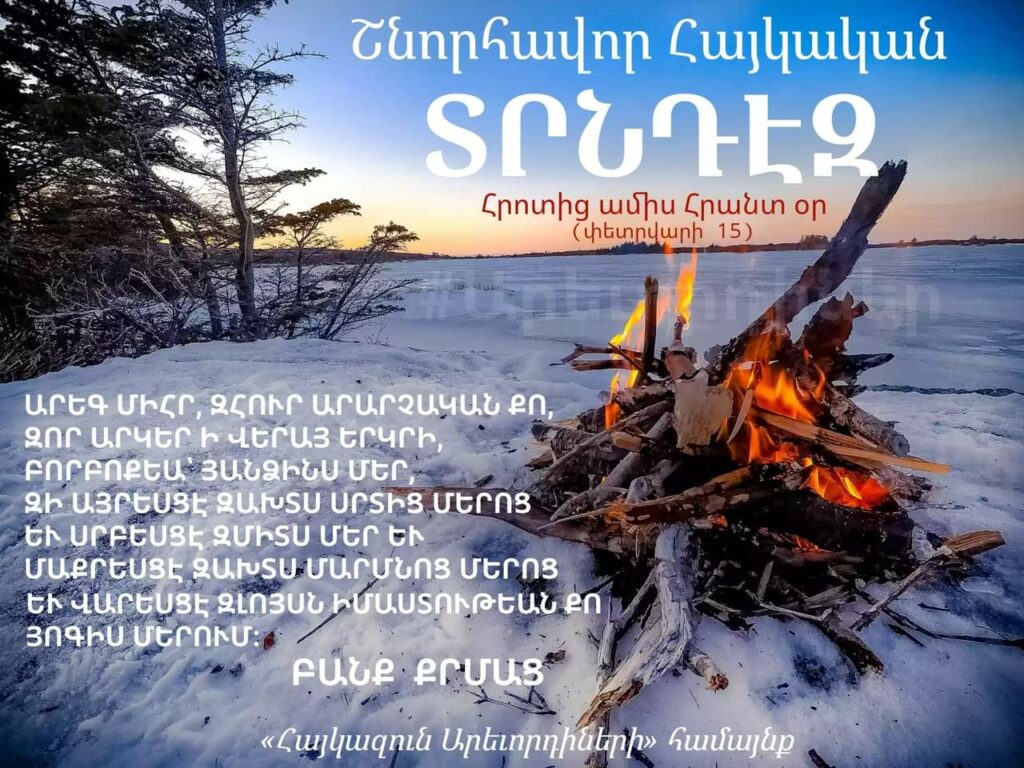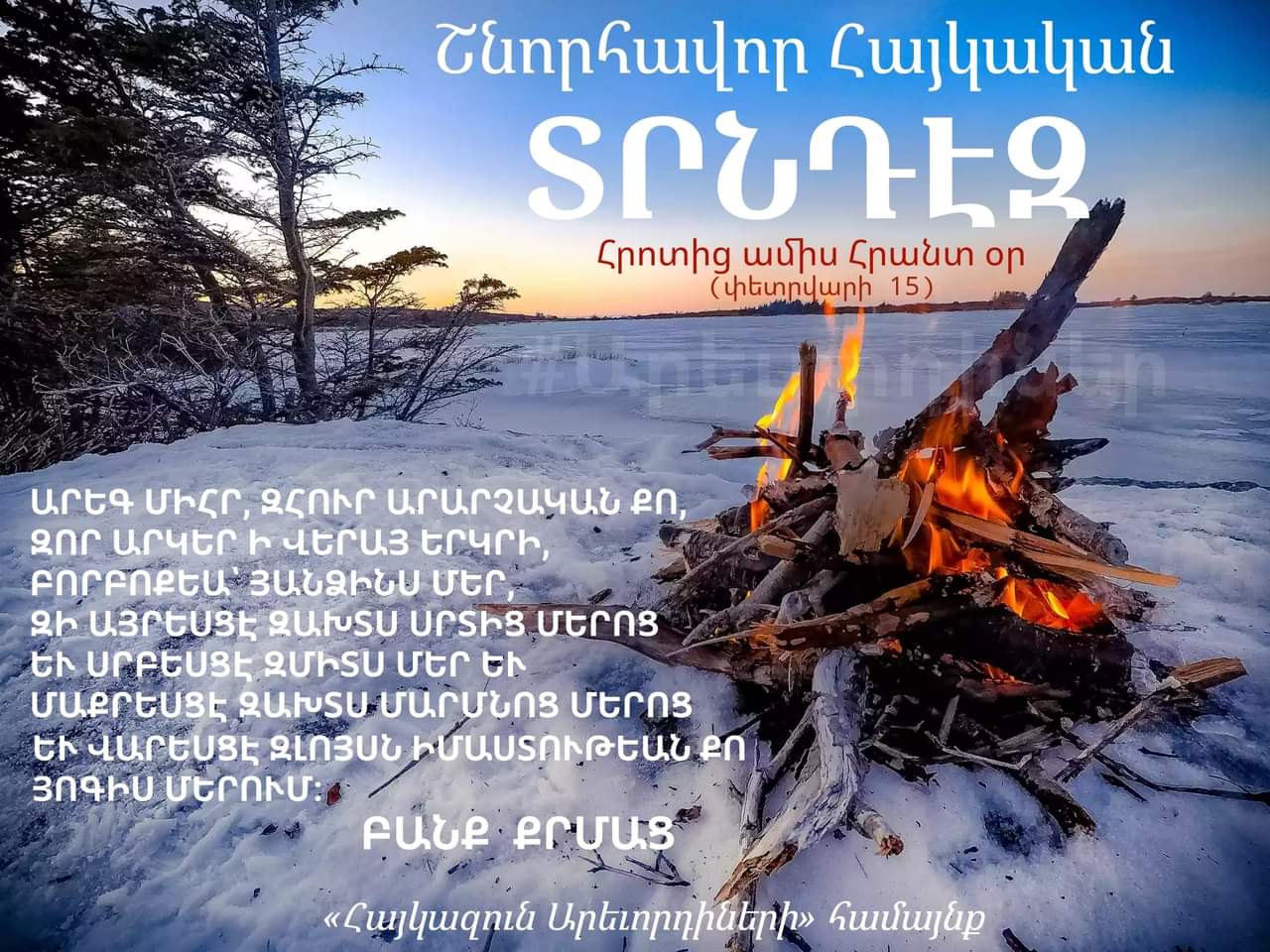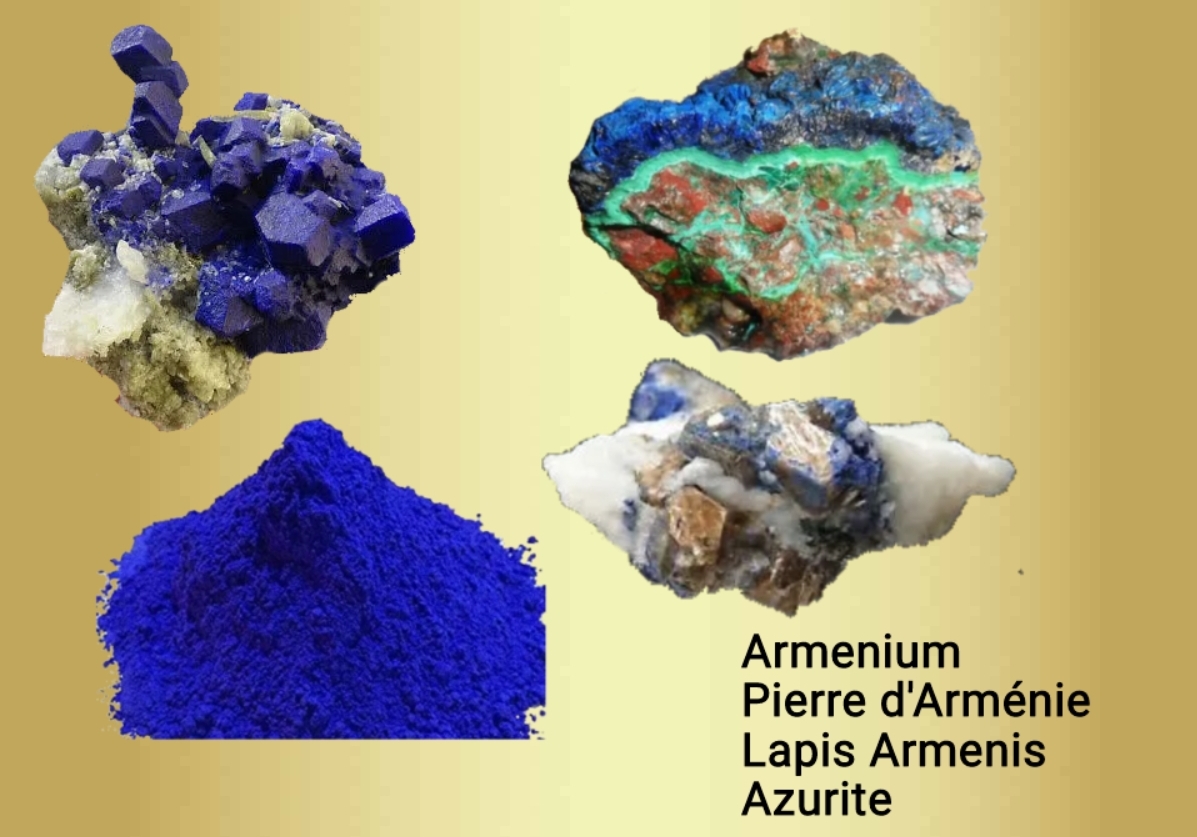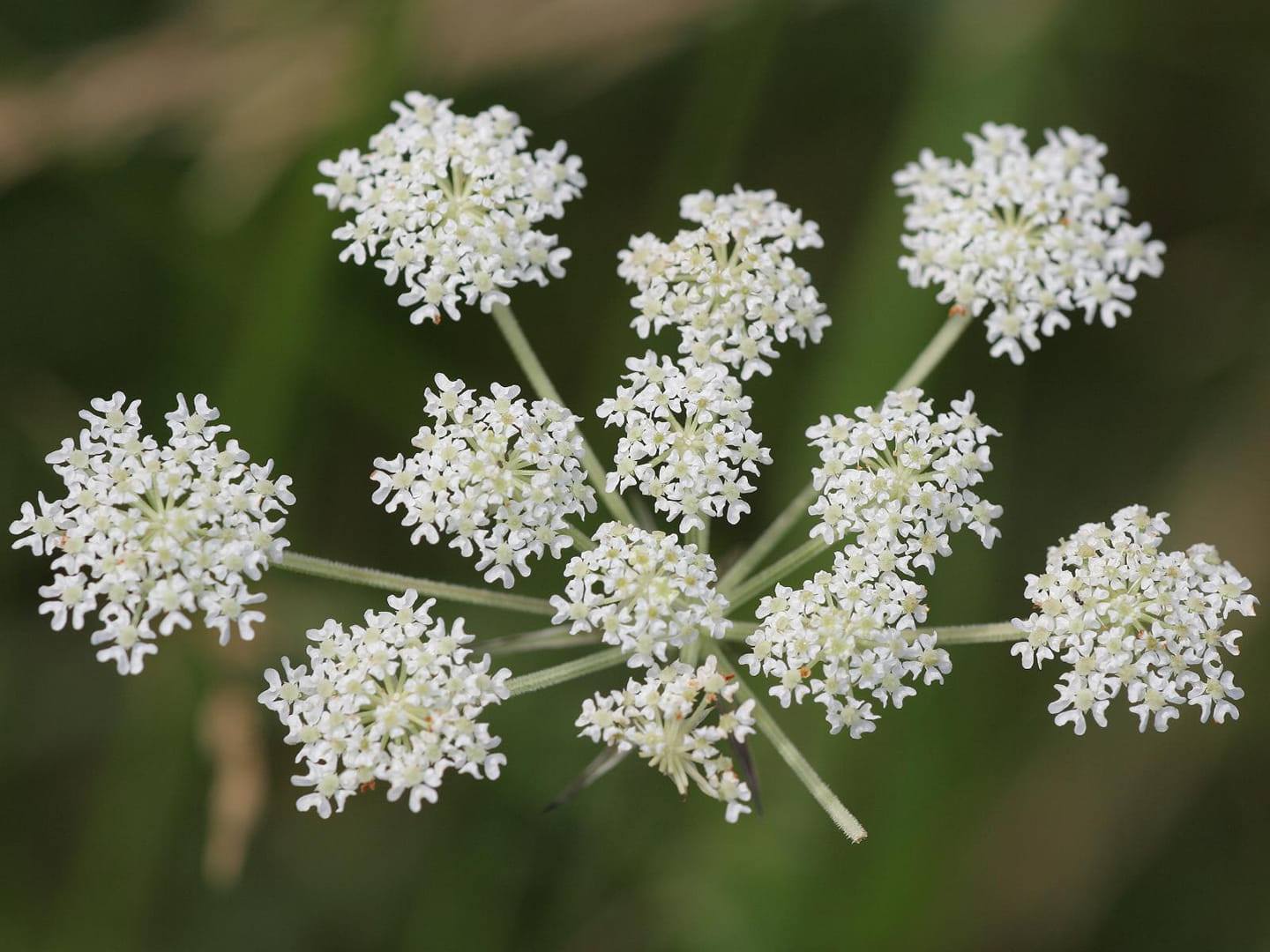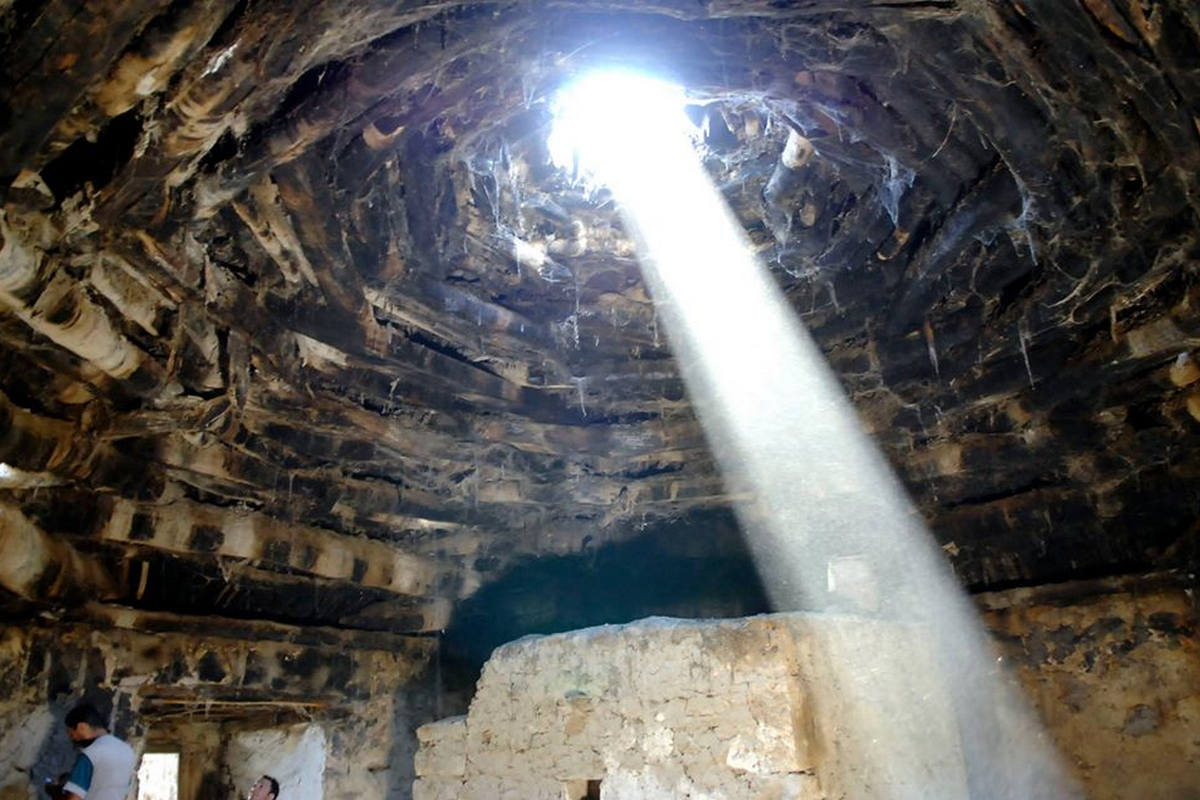“Trndez – Witness the strength of the rising smoke,
Plant a single seed, gather a thousand in return…”
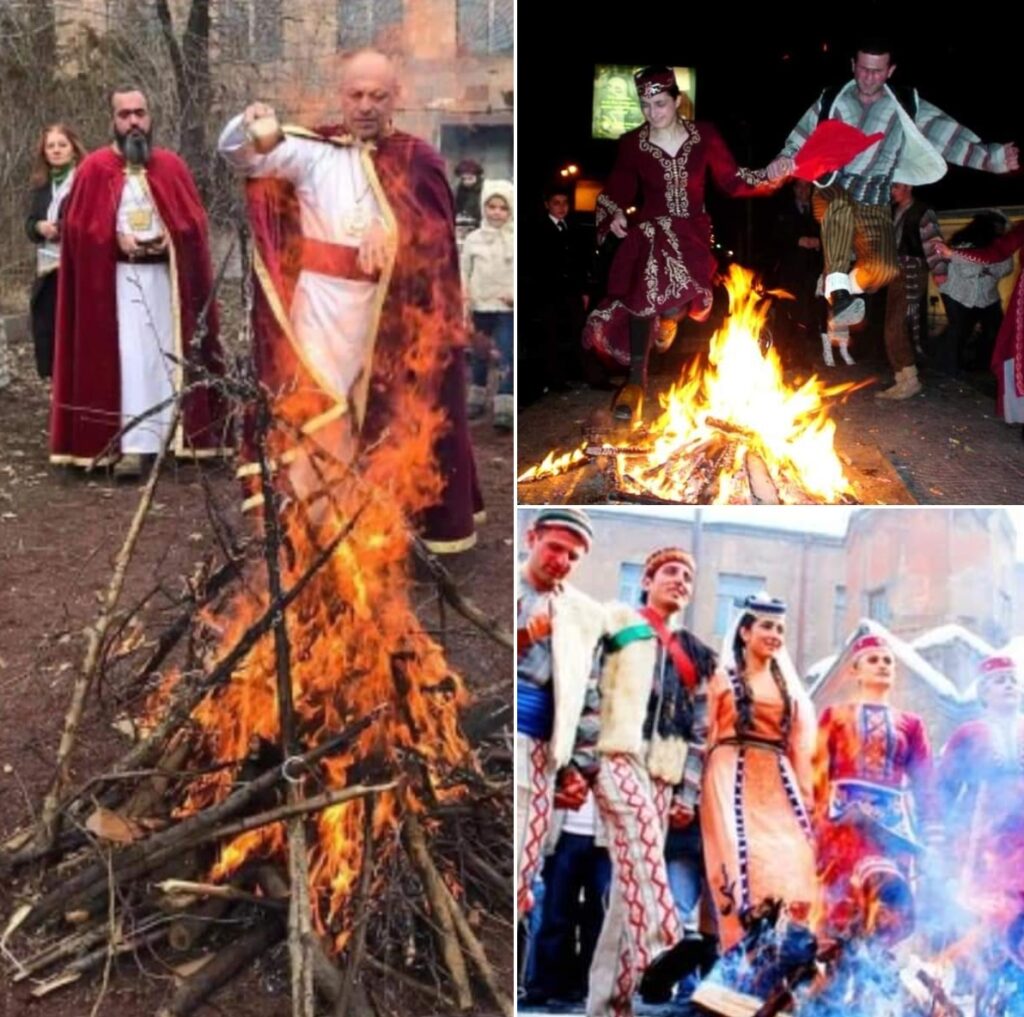
Trndez: The Festival of Fire and Renewal
Trndez is a festival symbolizing fire, a sacred and life-giving flame that warms the Earth and its people. According to Kurm Harut Arakelyan, following the Armenian Haykian Sacred Calendar, Trndez is celebrated on the Hrant day of the Hrotic month (February 15). The festival is marked by special rituals meant to assist the transition from winter to spring.
Like Barekendan, which is observed around the same time, Trndez is associated with the rebirth of nature. It is a celebration of prosperity, hoping for a successful and fruitful new agricultural year. The rituals performed are believed to ensure fertility and abundance.
Because humans are deeply connected to nature and the cosmos, this festival was also a time to celebrate love, new marriages, and the promise of future generations.
“The festival fire is brought by the Kurms from the eternal flame burning in the temple. They light the fire and empower it with magic through sacred rituals. At the end of the festival, people take the fire home to light their hearths, ovens, or in modern times, candles,” explains Kurm Harut Arakelyan.
How Trndez Was Celebrated in Kharberd (From “Hushamatyan”)
“In February, bonfires are lit in the evening on the rooftops of Armenian homes in Kharberd, Hüsenig, and Mezire. Large piles of branches burn for hours, as boys and girls dance and sing around the fire. Some jump over the flames.
In rural villages, the festival—called Melet—is celebrated in a grand manner.
First, an evening church service takes place. Then, with candles lit, villagers head toward their neighborhoods to ignite the bonfires.
In some villages, the fire is only lit in the churchyard. In Barjanj (Bergenj/Akçakiraz), the largest donor of the day has the honor of setting the bonfire ablaze.
After the fire is lit, people return home with burning candles, and the celebrations continue on their rooftops. Families light smaller fires, singing and dancing late into the night. Dried branches (tsrdeni) are often used as fuel.
Young men eagerly participate in gathering firewood for the festival.
Even the ashes of the bonfire are believed to have protective powers. Villagers scatter them over rooftops to keep snakes and scorpions away during the summer. The ashes are also spread in barns, henhouses, fields, and vineyards, as people believe Melet (Trndez) brings fertility and prosperity.
In Datem village, Garib Shahbazian mentions that newly married men must follow the tradition carefully.
They are required to bring firewood and place it at the church entrance.
If they fail to do so, the evil spirit Shvot might punish them by taking away their young wives.”
Blessings, Fire, and Songs
As the bonfires burn, people express their wishes:
“May our hens lay eggs, may our cows give milk, may our brides bear children…”
Songs celebrating love and marriage have been sung during Trndez for generations:
“Girl, your name is Vardanush,
You are beautiful, your kiss is sweet,
What harm is there in a kiss?
It will neither fade nor grow old…”
“Oh Gurgen, Gurgen, you talked too much,
But you did not say what was needed.
To love is foolish,
But to hold back is worse.”
“Oh, girl Vardanush,
I will carry your burden,
I will carve the stones,
And I will keep you happy.”
“Love is for those who cherish it,
And wine is for those who drink it sweetly…”
